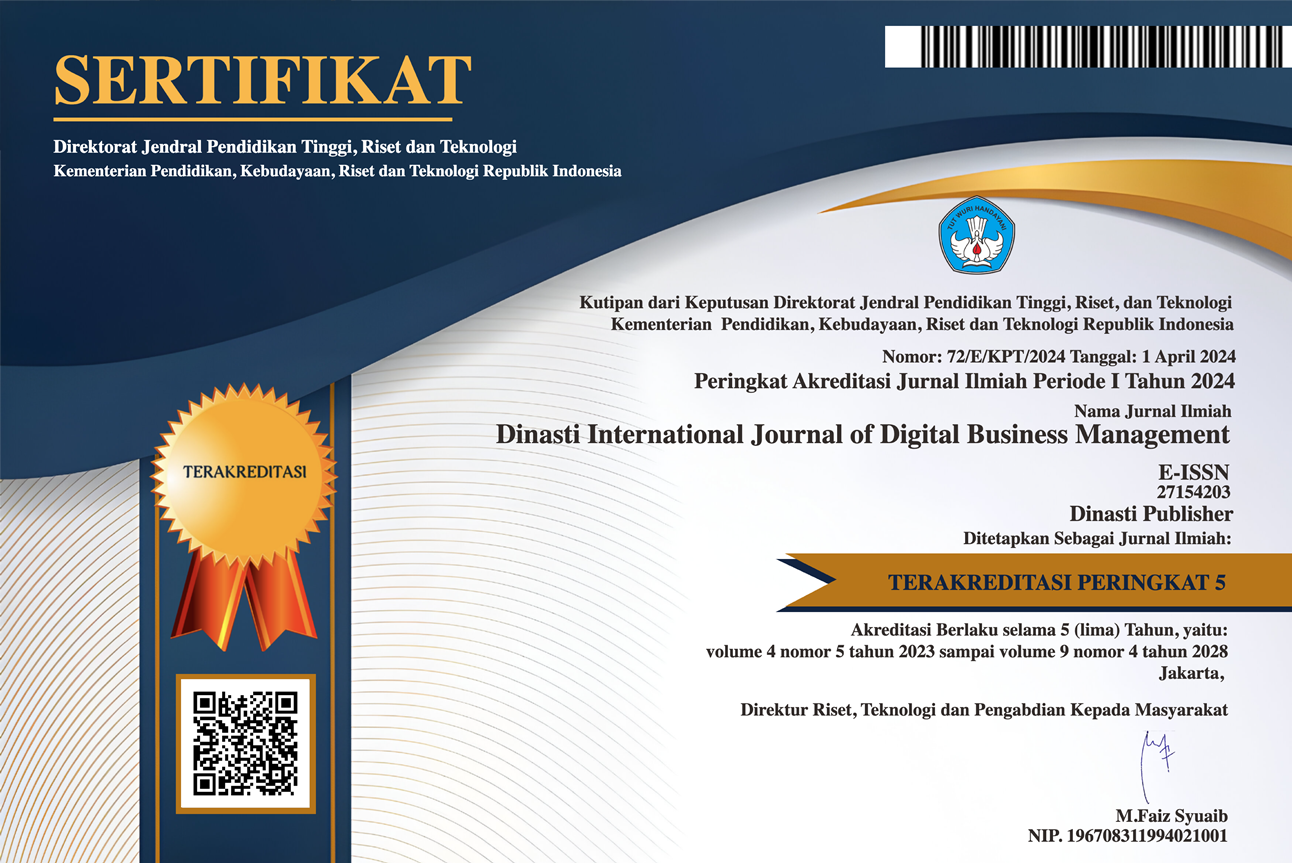The Influence of Organizational Culture, Work Discipline, and Work Experience on Employee Performance
DOI:
https://doi.org/10.38035/dijdbm.v6i2.4372Keywords:
Organizational Culture, Work Discipline, Work Experience, Employee PerformanceAbstract
Human resource management plays an active role in improving employee performance through several variables affecting it including organizational culture, work discipline, work experience, and employee performance. The formulation of the problem in this study is whether organizational culture, work discipline, and work experience have a significant effect on PT. Sinarmulia Sukses Makmur. This study is a quantitative study with a descriptive design. The research was conducted by searching for primary data, through the filling out of questionnaires by respondents of employees of PT. Sinarmulia Sukses Makmur, was conducted by sampling through a random sampling method. The data are processed by statistical analysis with multiple linear regression tests, coefficient of determination (R-square adjustment), partial testing hypothesis (t-test), and simultaneous ANOVA testing (F-table). The purpose of this study is: 1) To find out the effect of organizational culture on employee performance. 2) To find out the effect of work discipline on employee performance. 3) To find out the effect of work experience on employee performance. 4) To find out the effect of organizational culture, work discipline, and work experience jointly on the performance of employees. The results of this study are as follows: 1) Organizational culture has a significant effect on employee performance. 2) Work discipline has a significant effect on employee performance. 3) Work experience has a significant effect on employee performance. 4) Organizational culture, work discipline, and work experience jointly have a significant effect on the performance of PT. Sinarmulia Sukses Makmur employee. The conclusion of this study is that there is a significant influence on organizational culture, work discipline, work experience, and employee performance at PT. Sinarmulia Sukses Makmur. Suggestions for subsequent researchers to proceed with follow-up studies that address a wider scope such as adding other variables.
References
Badriyah, Mila, Manajemen Sumber Daya Manusia, Pustaka Setia, Bandung, 2017
Berger, Charles R; Michael E. Roloff; dan David R Roskos-Ewoldsen, Handbook Ilmu Komunikasi (Terj. Derta Sri Widowatie), Nusa Media, Bandung, 2017
Bohlander, George., and Snell, Scott, Principles of Human Resource.Management, 15th ed. Mason, OH: Cengage Learning, South Western 2017
Dessler, Gary, Manajemen Sumber Daya Manusia, Salemba Jakarta, 2015
Edy Sutrisno, Manajemen Sumber Daya Manusia. Cetak Ke Enam, Pranada Media Group, Jakarta, 2017
Emron Edison, Yohny Anwar, dan Imas Komariyah, Manajemen Sumber Daya Manusia. Strategi dan Perubahan dalam Rangka Meningkatkan Kinerja Pegawai dan Organisasi, Alfabeta, Bandung, 2019
Fahmi, Irham, Perilaku Organisasi: Teori, Aplikasi, dan Kasus. Cetakan Kedua CV. Alfabeta. Anggota IKAPI, Bandung, 2016
Gregory dan Ricky W. Griffin, Perilaku Organisasi, Salemba Empat, Jakarta, 2013
Mangkunegara, AA. Anwar Prabu, Manajemen Sumber Daya Manusia Perusahaan, Rosda, Bandung, 2017
Rivai, Veithzal, 2013, Commercial Bank Management: Manajemen Perbankan dari Teori ke Praktik, edisi 1, cetakan 1. Rajawali Pers, Jakarta, 2013
Robbins, S.P dan Timothy A. Judge, Perilaku Organisasi, Edisi 16, Salemba Empat Jakarta, 2015
Sugiyono, Metode Penelitian Pendidikan Kuantitatif, Kualitatif dan R&D, Alfabeta, Bandung, 2016
Wibowo, Manajemen Kinerja, edisi ketiga, Rajawali Pers Jakarta, 2017
Downloads
Published
Issue
Section
License
Copyright (c) 2025 Yupitasari, Herni Pujiati

This work is licensed under a Creative Commons Attribution 4.0 International License.
Authors who publish their manuscripts in this journal agree to the following conditions:
- The copyright on each article belongs to the author(s).
- The author acknowledges that the Dinasti International Journal of Digital Business Management (DIJDBM) has the right to be the first to publish with a Creative Commons Attribution 4.0 International license (Attribution 4.0 International (CC BY 4.0).
- Authors can submit articles separately, arrange for the non-exclusive distribution of manuscripts that have been published in this journal into other versions (e.g., sent to the author's institutional repository, publication into books, etc.), by acknowledging that the manuscript has been published for the first time in the Dinasti International Journal of Digital Business Management (DIJDBM).















































